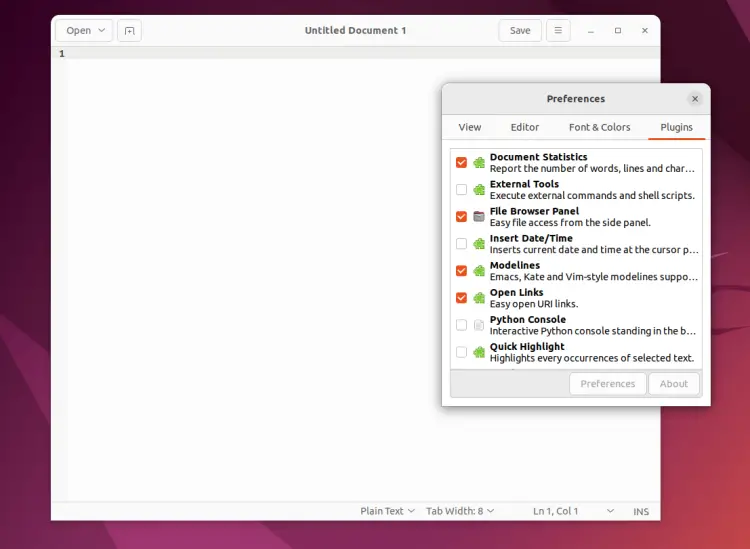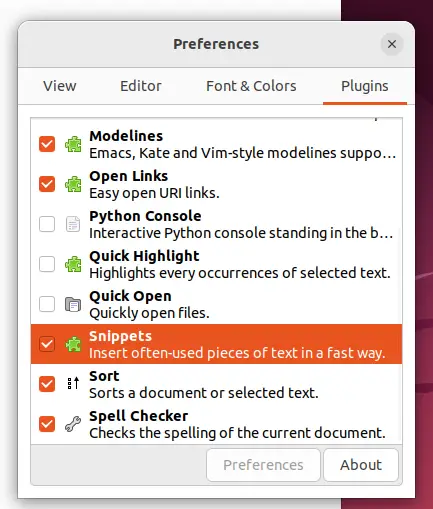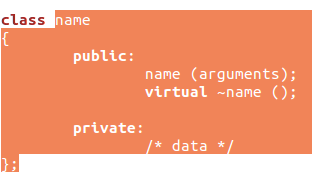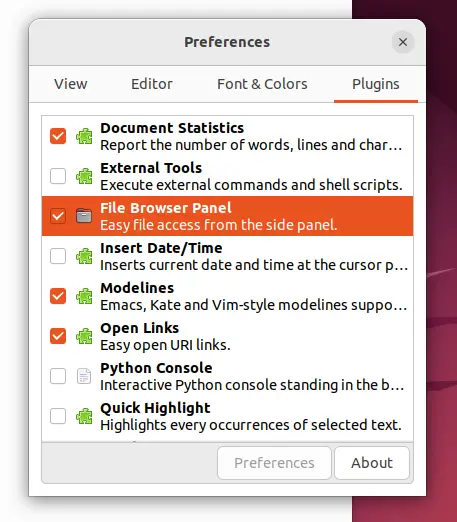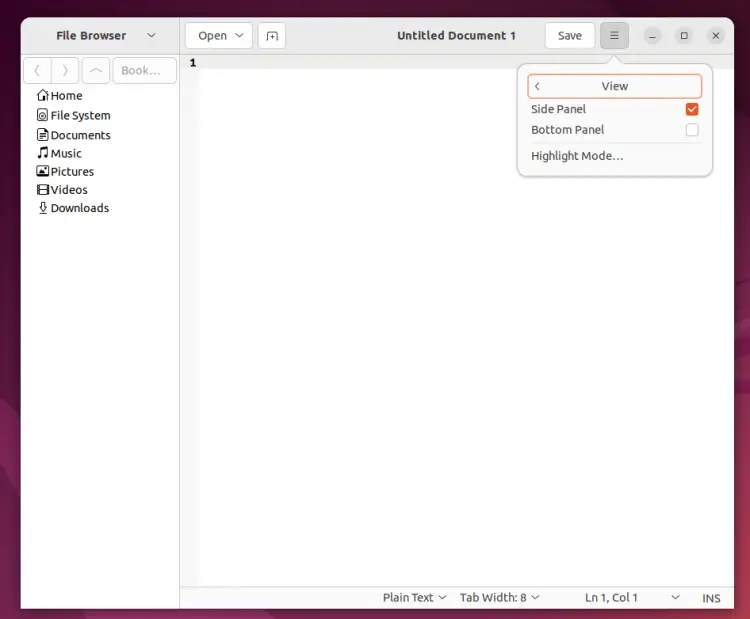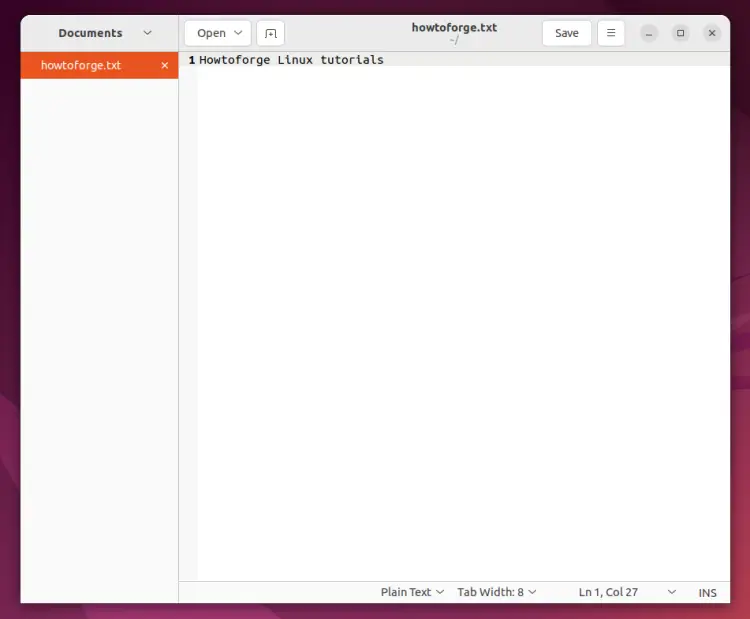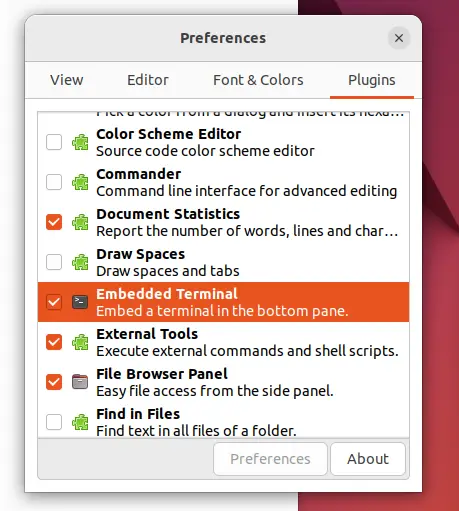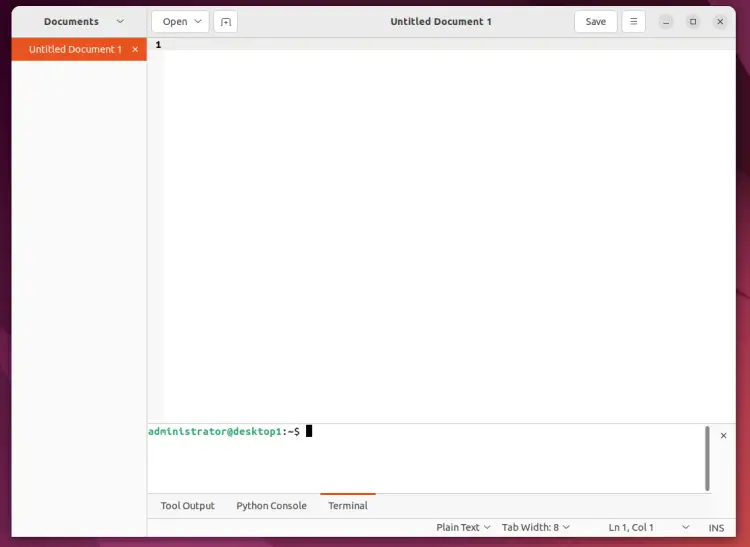Useful Gedit Plugins for Software Developers
Gedit, as most of you already know, is a popular general-purpose text editor. Gedit is the default text editor for Linux distributions that use the GNOME desktop environment. The first thing you notice about Gedit is its slick and uncluttered user interface. It is also a lightweight application, which is another plus.
Gedit offers almost all the features you'd expect from a simple text editor, but if that's not enough for you, you can add more features to it with plugins. There are several Gedit plugins - to see the full list, open the Gedit application on your system and go to Edit->Preferences->Plugins.
Below is a screenshot of the Plugins tab in my Gedit application:
You will notice that some of the available plugins are activated by default, while others are not. To activate a plugin, click on the empty box corresponding to the plugin. To deactivate a plugin, click on a box that is already selected.
By default, Gedit does not offer many features for programmers, but this can be changed if you install and activate (if needed) some useful development-related plugins. If you are a software developer and want to make the most of Gedit for development purposes, you have come to the right place, because in this tutorial we will introduce some really useful programming-related Gedit plugins.
Useful development-related Gedit plugins
1. Snippets
If you're a Linux command-line user, you're probably using Bash's autocomplete feature, which - for those who don't know - automatically completes file/directory names as soon as the user presses the TAB key after writing the first few characters of the name.
Perhaps not quite in the same way. The snippets plugin in Gedit works in a similar way. Before we go any further, let's quickly activate the plugin:
If there is no entry for snippets, it means that the plugin is not installed. To install it, execute the following command:
sudo apt install gedit-plugins
This should install Snippets and some other Gedit plugins. If you have problems with the above command, you can probably find help here.
Now that the plugin is installed and activated, you can easily test it by writing a small piece of code. For example, I wrote the word "class" in a header file in a C++ project and then pressed the TAB key. That's what the plugin did:
The code template highlighted in the screenshot above was created automatically thanks to Snippet. Now that you have an idea of what this plugin can do, let's take a quick look at what Snippets' official documentation says about the plugin (so you can understand it better):
"The idea is that users can create small tags that expand into a snippet of text," the document says. "When the tag is entered in the Gedit view and <tab> is pressed, it expands to the text snippet. The user can set insertion points in the snippet so that when <tab> is pressed again, the cursor jumps to the next insertion point. It's very simple and a bit like TM (although it probably needs some additional features)."
For more information on the plugin, head here.
2. File Browser
One of the basic and very useful features offered by a programming IDE is the file browser, which allows you to easily access or switch between different files of a particular project or the system in general. Yes, you guessed it right, the file browser functionality can also be added to Gedit through a plugin.
The plugin is called File Browser Panel, and the good thing about it is that you don't have to explicitly enable it, as it is enabled by default.
Now the question is how to add the side panel to Gedit UI. This is very simple: Click on the "Side Panel" option in the "View" menu. You will see that the side panel appears on the left side, there you select 'File Browser' at the top:
Note: To quickly open and close the page panel, you can press the F9 key each time - this is an easy alternative to calling up the Page Panel option in the View menu each time you want to toggle the function.
At the top of the sidebar, you can toggle between Document view and File Browser. The document view lists the documents that are currently open in Gedit.
Whenever you are in a searchable directory, a search bar appears directly above the icons at the bottom, allowing you to search for files in that directory.
3. Embedded Terminal and Python Console
There is another very useful development plugin you can use: Embedded Terminal. To install this plugin, run the following command in the terminal:
sudo apt install gedit-plugins
If you use Linux as your development platform, the command line terminal is an indispensable part of your work. And if you use Gedit as your programming editor, you'll be happy to know that you can embed a command line terminal in the editor with the Embedded Terminal plugin mentioned above.
Once the plugin is activated in the Settings menu, simply go to the View menu and click on the Bottom Panel option. You will see that a command line terminal appears in embedded form at the bottom of the editor's user interface:
It's hard to imagine how much time you can save with this plugin, especially if you mainly work with the command line. Besides the normal Linux terminal, there is also a Python console available. You can enable the Python console in the same way you enabled the Terminal.
Conclusion
The three plugins we've discussed in this tutorial should be enough to give you an idea of how easy it is to extend Gedit's functionality to make it more developer-friendly. If you look closely, all three plugins - Snippets, File Browser and Embedded Terminal - can prove useful even if you're not a programming geek.
Of course, this is just the tip of the iceberg, as there are many other development-related plugins for Gedit. We will try to collect a handful of other useful plugins and publish part 2 of this tutorial soon.

